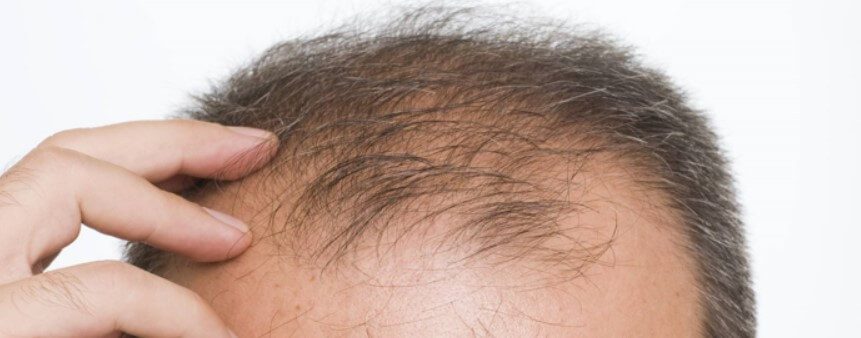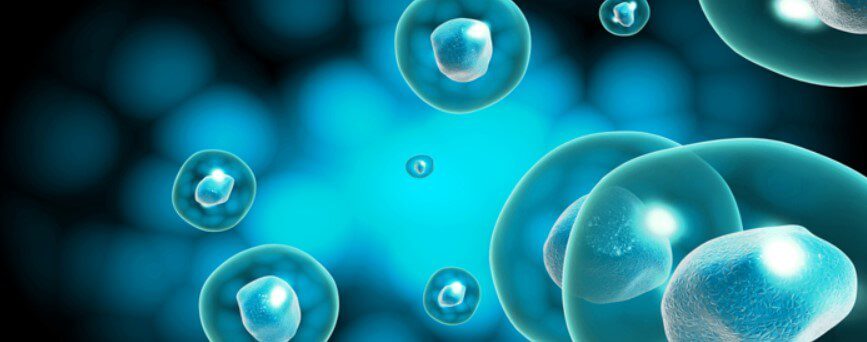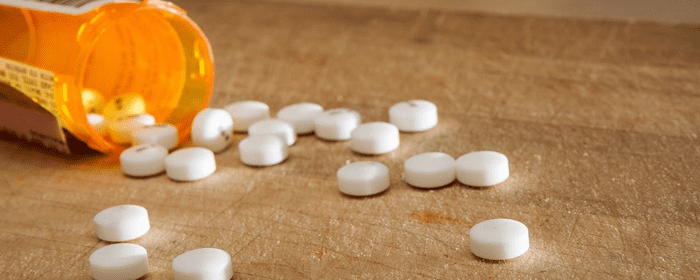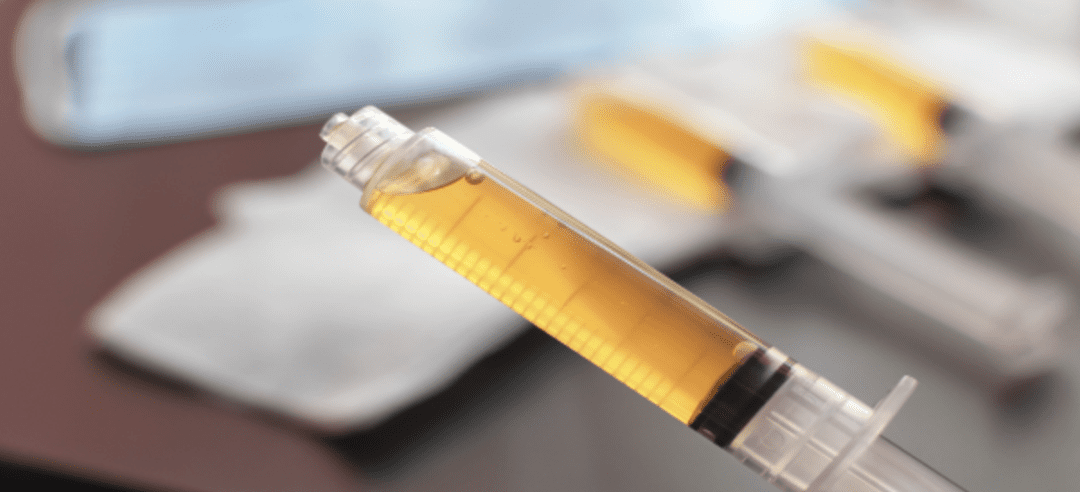
by Stemedix | Jun 3, 2024 | Age Management, Hair Regrowth, Health Awareness, PRP, Regenerative Medicine, Stem Cell Research, Stem Cell Therapy
Your hair can be part of your identity. For some people, their hair is a symbol of their spiritual beliefs. Whether you’re focused on beauty and aesthetics or a deeper meaning behind your hair, hair loss can be devastating.
For some people, regenerative medicine is an innovative, research-based solution to hair loss. Learn more about how regenerative hair loss treatments may restore your healthy locks.
How Hair Loss Is Related to Your Well-Being
Losing hair is often a symptom of an underlying health problem. While some people experience hair loss due to genetics or lifestyle choices, others may face lurking medical issues. Here are some of the ways your hair growth (or lack thereof) is related to your physical and mental wellness.
Self-Esteem and Confidence
You may feel embarrassed, ashamed, or self-conscious if you start to lose your hair. Both men and women struggle with remaining confident after significant hair loss. Your mental well-being may suffer if you can’t get your hair to grow back on its own.
Some cultures associate losing hair with aging and other stereotypes. This can be devastating for someone going through medical, hormonal, or age-related hair loss. Healthy hair regrowth may help you regain the confidence you lost.
Hormones
Your hormones are chemical messengers that regulate all of your body’s processes. Hair growth is tied to your hormones, and any fluctuations or declines in certain hormones can lead to losing hair. Think about post-pregnancy hair shedding; this happens because your body’s cascade of pregnancy hormones changes.
Hormonal changes as you get older can affect your hair. Age-related hair loss and thinning primarily affect women due to declines in estrogen production, but this problem can affect men as well.
Genetic Baldness
Male-pattern baldness is passed down through families. If you carry the gene for this condition, you may experience very early balding, starting in your 20s or 30s. This can change your appearance and make you feel older than you really are.
There are no ill physical effects from male-pattern baldness besides losing hair. However, you may experience poor mental health as a result of your unwanted early hair loss and thinning.
There is no cure for male-pattern baldness, but you can take steps to treat it. Regenerative medicine is here to intervene and treat hair loss in a natural, science-based way.
ExogroPro: The Latest in Hair Regrowth Science
When you experience hair loss of any kind, you probably have two priorities — prevent further hair loss and replenish your missing hair. ExogroPro, a professional-grade hair loss solution, addresses both of these problems at once.
How It Works: Preventing Further Hair Loss and Regrowing Lost Hair
ExogroPro works to stimulate your hair follicles, causing them to grow healthy hair again. This treatment uses the power of specific exosomes, which carry materials between your cells.
ExogroPro is designed to send signals to your hair follicles that stimulate hair growth. Because of exosomes’ extracellular communication abilities, they may be able to revive “dead” hair follicles on your head.
Because of this treatment’s therapeutic effects on hair follicle health, it may help prevent further hair loss and thinning. By rejuvenating your hair follicles and preventing them from going dormant, ExogroPro offers a possible solution to unwanted lost hair.
The Procedure: What to Expect
The premium patent pending ExogroPro formula is injected into the scalp to deliver exosomes to the hair follicles. These exosomes originate from human stem cells, specifically mesenchymal stem cells. This is just another way we can harness the power of stem cells to regenerate and repair damaged tissues within your body.
After two to six months, you may notice your hair growing back thicker and fuller than before. The results window varies, but one thing is certain — hair regrowth is worth the wait.
The Benefits of Choosing Regenerative Medicine for Hair Growth
With many prescription hair growth drugs on the market, you may be wondering — why choose ExogroPro? Here are the major benefits of choosing regenerative medicine for hair regrowth and thickening.
May Be More Effective Than Traditional Treatments
There are numerous treatments for hair loss, including PRP injections, topical oils, and more. These have varying efficacy and likely won’t give you the results you’re looking for. Prescription-strength hair growth drugs may not work for you either, resulting in frustration and discouragement.
Regenerative medicine harnesses the power of science and innovation. By using human stem cells, we work with the body processes already in place within your system. Exosomes may prove to be more effective and efficient than other hair loss solutions.
Drug-Free Therapy
Exosomes are naturally found in the human body. When you choose ExogroPro, you choose drug-free natural therapy for your hair and scalp.
While prescriptions can be helpful for some people facing hair loss, it’s understandable to want a natural alternative. We work with your natural healing and regrowth processes, not against them.
Dual-Action Treatment: Prevention and Active Regrowth
It’s impressive to consider how ExogroPro not only prevents further lost hair but can revive faulty hair follicles. This dual mechanism is key to getting the full head of hair you’re after. If it works for you, you’ll no longer have to mourn the hair you’ve lost — you could potentially get it back!
Encourages Hair Health
Solving hair loss isn’t just about replacing lost hair. It’s also about growing healthy, strong locks that can withstand damage and remain intact. ExogroPro promotes hair follicle health by improving cellular communications in the injected tissues. What’s more promising than the idea of a full, healthy head of hair after hair loss and thinning?
Combating Hair Loss and Thinning with Medical Science
It’s important to seek evidence-based treatments for your hair loss. No matter what the root cause of your hair problems is, you may find regenerative medicine to be a viable solution.
You don’t have to mourn your lost hair forever. Regenerative medicine is at the forefront of medical innovation and science, which could spell good news for your hair.

by Stemedix | Jan 29, 2024 | Parkinson's Disease, Lyme's Disease, Osteoarthritis, PRP, Regenerative Medicine, Stem Cell Therapy, Stroke
Orthopedic rehab is a type of rehabilitation designed to help people who have been injured, had surgery, or have degenerative conditions. Its goal is to aid patients in regaining mobility, balance, and function in their musculoskeletal system. Orthopedic rehab also focuses on finding ways to alleviate pain.
If you have suffered an injury or gone through surgery, or if you have a degenerative condition that affects your mobility, orthopedic rehab could be the right option for you. But what can it help with, and what can you expect from the process?
What Conditions Can Orthopedic Rehab Help With?
Orthopedic rehab is a conservative treatment that can benefit patients of all ages who are suffering from issues that affect their range of motion, joint flexibility, muscle strength, and body function.
It can help with conditions like:
- Joint pain
- Arthritis
- Parkinson’s disease
- Lyme disease
- Scoliosis
- Stroke
- Spinal stenosis
- Knee instability
- Carpal tunnel
- Osteoporosis
- Sciatica
This type of rehab is usually essential for those recovering from joint replacement surgeries and similar procedures. It can also help with pelvic floor issues.
Orthopedic physical therapy is important after certain surgical procedures, including those like:
- Knee replacement
- Rotator cuff replacement
- Knee arthroscopy
- Hip replacement
- Cancer surgery
- Heart surgery
This type of rehab can help to normalize your gait, improve your range of motion, and even prevent excessive scar tissue buildup.
It’s also helpful for people who’ve suffered a chronic injury. A chronic injury is damage that occurs over time, generally because of small movement patterns that lead to repetitive injuries to your bones, joints, or tendons. Tennis elbow or carpal tunnel are examples. With rehabilitation, you can learn how to move without injuring yourself.
Benefits of Orthopedic Therapy
Orthopedic therapy helps increase your mobility. Mobility can be limited after an operation, while recovering from an injury, or when dealing with degenerative diseases. This type of therapy utilizes stretching and exercise strategies to slowly increase your range of motion.
Orthopedic therapy also helps with pain management so that you don’t have to rely as much on pain medications. Therapists can massage the treatment area, increasing circulation and decreasing inflammation. Some orthopedic therapy options use ice packs for dealing with inflammation and heat packs for loosening tension.
Better blood circulation, which orthopedic therapy helps with, also brings oxygen and nutrients to the treatment area. This makes it easier for injuries to heal.
You can also help avoid re-injuring yourself. Therapy assists by teaching you to move safely while also showing you how to gain strength in the area.
Types of Treatments Offered in Orthopedic Therapy
When you turn to orthopedic therapy, you can benefit from a few different types of treatments.
Hot and Cold Therapy
Orthopedic therapy often relies on thermotherapy (heat therapy) and cryotherapy (cold therapy) to treat musculoskeletal swelling and pain.
E-Stim
Electrical stimulation can help diminish pain. With E-stim, your therapist attaches a device to the treatment area. The two main types of devices they may use include TENS, which uses low-voltage electrical currents to offer pain relief, and NMES, which sends electrical impulses to the nerves.
Exercise Therapy
You will get an exercise plan that helps you increase mobility, strength, and balance. You will get a chance to practice them with the therapist so that you can then repeat them at home.
Soft Tissue Manipulation
Soft tissue manipulation is a kind of manual physical therapy in which your physical therapist massages your ligaments, fascia, and muscles. It helps optimize muscle function while also decreasing tension. It may also be effective at improving blood circulation.
Laser or Light Therapy
Low-level lasers and light therapies can help with muscle performance. They have the potential to reduce muscle fatigue and help tissues repair after an injury.
Platelet-Rich Plasma Therapy
Platelet-rich plasma (PRP) therapy uses the growth factors in your blood to encourage healing at the treatment area. It’s an option that often complements other orthopedic therapies.
What an Orthopedic Rehab Plan Can Look Like
The orthopedic plan your healthcare provider recommends will consider your injury, overall health, abilities, and goals. You will have a personalized and unique program that your team can adjust as you progress through it.
The first step is to determine whether you can benefit more from an inpatient or outpatient orthopedic rehab program. In more complex situations, inpatient care is usually the right choice, while outpatient options are better suited for minor injuries.
Most patients start each rehab session with physical therapy. These sessions can last between 30 and 60 minutes. Those with more serious issues can begin lying on an exam table while the therapist performs some passive exercises. You may then have to perform the same exercises on your own.
Your therapist may then continue to show you more stretches and exercises to incorporate into your home routine. Some of the exercises may even rely on weights or bands.
Orthopedic rehab also focuses on helping patients perform everyday tasks. If you have trouble walking, the session can involve relearning how to do this correctly to avoid falls and further injuries. If you have had a joint replacement, you may relearn to walk with the support of the therapist before moving on to walkers and other devices.
Patients who need to improve grip strength will likely spend a significant amount of time in the session practicing grabbing things of increasing weight.
For patients who have degenerative diseases, balance exercises are particularly useful. They can help the patient better understand where their body is in space. Some of these exercises can include standing on one foot and raising or lowering a foot or knee.
Getting the Care You Need
Orthopedic rehab offers the chance to regain your strength, balance, range of motion, and more after suffering an injury or going through surgery. It is also useful in the process of managing degenerative diseases like Parkinson’s.
By combining various types of therapies, including PRP therapy, you have the chance to get relief from pain while also preventing future injuries.

by Stemedix | Jan 22, 2024 | Health Awareness, Multiple Sclerosis, Parkinson's Disease, PRP, Stem Cell Research, Stem Cell Therapy, Studies
Regenerative medicine options like stem cell treatments are growing in popularity both because of their potential effectiveness and because they can help you avoid invasive procedures like surgeries. Stem cell therapies focus on helping your body improve what it already does naturally — heal injuries.
Stem cells are the cells from which all differentiated cells form. They can come from your bone marrow or fat, with some people also turning to umbilical cord stem cells for treatment. But how do you know if you could benefit from stem cell therapy?
Those With Sports Injuries
If you play sports, you know that injuries can occur at any moment. You can twist your body in an unnatural way or suffer an impact that damages joints or ligaments. Minor injuries usually benefit from ice packs and rest, but healing can take time.
Healing is also a delicate process that can be disrupted. If that occurs, the injury might not heal completely and could lead to chronic issues that impact your mobility and even cause lasting pain.
When you turn to stem cell therapies, you can speed up the healing process. This type of regenerative medicine helps reduce inflammation, making it easier for nutrients and oxygen to get to the site of the injury.
Increased oxygen and nutrients are particularly important when dealing with ligaments and cartilage, which naturally don’t receive much blood flow.
Those With Arthritis
Arthritis is a debilitating condition in which your joints’ cartilage starts to deteriorate. The cartilage is what cushions your joints, preventing the bones from rubbing against one another. Once the cartilage breaks down, you can experience pain, stiffness, and mobility issues. In some cases, it can even cause joint deformity.
Stem cells, especially mesenchymal stem cells, release anti-inflammatory factors that help with pain and encourage your body to heal the damaged areas. Stem cells injected into the affected joint can reduce swelling, helping reduce pain and also restoring some mobility to stiff joints.
One of the best things about stem cell therapies for arthritis is that this kind of treatment is minimally invasive.
Those With Spinal Cord Injuries
Spinal cord injuries may severely impact your quality of life. You may struggle to perform everyday tasks and could face mobility issues that leave you dependent on others.
Spinal cord injuries are particularly difficult to treat because healing tends to plateau as a result of microenvironmental changes like inflammation, glial scar formation, and more. Stem cells can help because of their power to reduce inflammation, allowing the healing process to continue.
Ongoing treatment with stem cells could offer an improvement in mobility and a reduction in pain levels.
Those With Traumatic Injuries
After a major injury, like one that results from a car accident, healing can seem impossible. You may experience significant pain and could be dealing with mobility concerns that require physical therapy and even surgery.
Stem cell therapy works well in conjunction with physical therapy and other treatments because it utilizes cells from your body gathered in a minimally invasive way. You can continue other therapeutic programs while giving your body the chance to reduce inflammation so that blood can reach the injury site.
A better level of blood flow to the area not only brings nutrients and oxygen but also helps flush out toxins at the injury site that could make the symptoms worse.
Those Who’ve Gone Through Surgery
Going through surgery can put a lot of strain on your body. That is one of the reasons why the recovery process is often so long. If you’ve been through a surgical procedure, consider stem cell therapy.
Stem cell therapy can help reduce the recovery time so that you can start feeling more like yourself again. Inflammation is a huge concern. Think of the kinds of bruising you may have after a surgical procedure. Although stem cell therapy can’t prevent all inflammation and bruising, its use after surgery can reduce how much you experience.
If there’s less inflammation, the area can receive more nutrients and experience faster healing.
Those Who Need Joint Replacements
Replacing a joint is a surgical procedure that requires the implantation of an artificial joint and the removal of the damaged one. The recovery process for this type of procedure tends to be difficult, with many people experiencing mobility issues even as they heal because the artificial part hasn’t really integrated into the rest of the tissue.
If this type of surgery is something that you have to go through, adding stem cell therapy to the recovery process makes a difference. Stem cell therapies encourage the growth of new tissues around the artificial replacement that can make mobility easier and decrease pain, helping you get back to your life more rapidly.
Those With Degenerative Diseases
Degenerative diseases are chronic conditions that progressively get worse. They include diseases like:
For these conditions, a combination of treatments is usually most effective. They can include medications, physical therapy, and even surgery. By also turning to stem cell therapy, you have the chance to tackle the underlying cause of the problem so that you can get relief from symptoms.
Stem cell therapy for Parkinson’s disease, for example, focuses on helping restore the failing neurons that are in charge of producing dopamine. This could help with the management of dopamine levels and could even restore some function. In many instances, stem cell therapy for Parkinson’s can even slow down the disease.
Is Stem Cell Therapy Right for You?
Stem cell therapy might be able to offer the help you need with managing degenerative conditions, healing injuries, and providing pain relief that doesn’t rely on narcotics. You don’t have to worry about suffering allergic reactions or rejections because stem cell therapies usually rely on cells from your body.
If you’re considering stem cell treatments or want to know more about what the process involves and what you can expect, talk with a regenerative medicine specialist about the options available.

by admin | May 19, 2023 | Health Awareness, PRP
Corticosteroids are a popular treatment for a number of common conditions. Cortisone, prednisone, and hydrocortisone are the most popular corticosteroids used in the medical field. These steroids can be used to treat the following conditions and more:
These medications are available as tablets, injectables, inhalants, and topical creams, making them a viable solution for a multitude of health concerns. While corticosteroids can reduce inflammation and target certain sources of discomfort, they do not come without risks. Weigh the benefits and risks of corticosteroids here.
Benefits
Treatment with corticosteroids can provide a large array of medical benefits, depending on how they are used, and the condition being treated.
Corticosteroid tablets can be taken to reduce inflammation inside the body, while topical steroids can relieve itching and swelling of the skin. Injectable corticosteroids are an effective option for joint and muscle pain, while inhalant steroids ease the severity of asthma symptoms.
Along with the wide variety of uses for corticosteroids, another benefit is the speed with which they work. Corticosteroids take effect almost immediately, relieving your symptoms and helping you feel better in a matter of minutes.
Risks
While corticosteroids are effective, they do come with certain risks and precautions. The following are just a few of the side effects you may experience with corticosteroid use:
- High blood pressure
- High blood sugar
- Vision changes
- Swelling around the face (moon face)
- Skin lesions and bruising
- Fluid accumulation in the legs
- Slower wound healing
- Bone fractures
- Weight gain
- Mood swings
- Increased risk of infections
Before starting a treatment plan that involves corticosteroids, you should always review the risks and benefits with your medical team. Your doctors can help you determine whether steroids are the best course of action for your unique medical needs.
Regenerative Medicine vs. Corticosteroids
Regenerative medicine is a rapidly evolving field that aims to develop new therapies to treat a wide range of medical conditions, and many patients are exploring this option as an alternative option.
PRP (platelet-rich plasma) and corticosteroids are both commonly used in the treatment of various musculoskeletal conditions, but they work in different ways and are often used for different types of injuries.
PRP involves injecting a concentrated solution of a patient’s own blood platelets into the injured area. These platelets contain growth factors that can help to promote healing and tissue repair. PRP is commonly used for conditions such as tendonitis, ligament sprains, and muscle strains.
Corticosteroids, on the other hand, are a type of medication that is often used to reduce inflammation and pain in the body. They work by reducing the activity of the immune system and can be administered either orally, topically, or through injection. Corticosteroids are commonly used for conditions such as arthritis, bursitis, and other inflammatory conditions.
Both PRP and corticosteroids have their advantages and disadvantages. PRP can be more effective at promoting long-term healing and tissue repair, while corticosteroids can provide more immediate pain relief. However, corticosteroids can also have side effects such as weakening of the bones and tendons, while PRP is a relatively safe and natural treatment option.
The choice between PRP and corticosteroids ultimately depends on the specific injury or condition being treated, as well as the patient’s individual needs and preferences. Your healthcare provider can help you determine which treatment option is best for you.

by Stemedix | Mar 6, 2023 | PRP
One of the most common chronic conditions in the United States is fibromyalgia. This disorder can affect both men and women at any age, leading to chronic pain and discomfort. Fortunately, there are many treatment options for fibromyalgia. In recent years, regenerative treatments like PRP therapy have emerged as potential solutions. What is PRP, and does PRP Treatment help Fibromyalgia?
What Is PRP Therapy?
PRP therapy uses platelet-rich plasma (PRP), the portion of your blood that contains a large number of regenerative platelets. This treatment uses your body’s own platelets to boost natural healing properties.
During a PRP procedure, a small amount of PRP is harvested from a blood sample and then injected back into your areas of concern. PRP therapy is being used to manage a variety of concerns, including everything from hair loss to joint damage.
Fibromyalgia
Fibromyalgia is a common condition that can develop at any age. It is characterized by widespread and chronic musculoskeletal pain. Fibromyalgia is believed to cause an increase in pain sensations by impacting the way your brain and spinal cord process pain signals. Symptoms of fibromyalgia include:
- Constant dull body pain
- Fatigue
- Irritability
- Trouble sleeping
- Brain fog
- Headaches
These symptoms can also be signs of many other conditions. However, when they occur constantly and in conjunction, they may indicate fibromyalgia. While fibromyalgia is a chronic and ongoing disorder, there are many treatment options available. One emerging treatment option is PRP therapy.
Can PRP Injections Be Used in Fibromyalgia Treatment?
Traditional approaches to fibromyalgia have involved prescription painkillers, physical therapy, and dietary changes. While these may be effective for some patients, many still struggle with ongoing fibromyalgia symptoms. These patients may benefit from regenerative approaches like PRP therapy.
PRP has been shown to be a viable solution to fibromyalgia symptoms, including chronic pain. Injections of platelet-rich plasma can be used to naturally reduce pain safely and effectively.
These injections interact with the affected nerves and muscles, reducing discomfort and curbing pain signals. PRP is considered to be a promising alternative to prescription medications, as it uses your body’s own platelets rather than chemicals. This means that side effects or adverse reactions are unlikely with PRP injections for fibromyalgia.
Regenerative treatments like PRP therapy are still being assessed when it comes to treating fibromyalgia. If you are currently struggling with fibromyalgia symptoms and looking for a new approach, speak to your physician about trying PRP therapy. Contact us at Stemedix today and ask our staff ” Does PRP Treatment Help Fibromyalgia? “. They are here to help!

by Stemedix | Nov 14, 2022 | Regenerative Medicine, PRP
Among athletic adults, chronic hip pain is common, affecting 30-40% of adults who play sports. In addition, adults over 60 are 12-15% likely to experience chronic hip pain, regardless of their activities. In the past, patients with chronic or acute hip injury pain typically had limited treatment options. The hips are the largest weight-bearing joints, making them more prone to overuse injuries and causing the hips to be especially difficult to heal. As a result, most hip injuries are treated with rest and physical therapy. Platelet-rich plasma (PRP) injections can potentially offer an alternative. Keep reading to learn more about PRP Injections for hip injuries.
What Causes Hip Pain?
Hip pain and injuries can affect patients of all ages. However, it’s most common among older adults. While some patients may experience damage in their hips due to a childhood illness or a structural abnormality, most injuries occur from overuse or trauma.
Hip injuries that patients often experience include:
- Labral tears (damaging the cartilage)
- Strains or sprains
- Dislocated hip
- Fracture
When a hip becomes injured, patients are more likely to experience other conditions that cause chronic pain in the hips, such as arthritis or bursitis.
What Is Platelet-Rich Plasma?
Four components comprise whole blood: the red and white blood cells, platelets, and plasma. Each serves an essential function as blood moves through the body.
Platelets are part of the body’s healing response, clotting the blood, so your injury stops bleeding and releasing growth factors and anti-inflammatory mediators to help facilitate healing.
PRP starts with a sample of the patient’s blood, which then spins in a centrifuge. The centrifuge separates the platelets and plasma from the white and red blood cells. As a result, PRP contains a highly concentrated number of platelets in the plasma.
Once separated, a physician injects PRP into the patient’s injury site to stimulate and expedite healing.
How Can PRP Treat Hip Injuries?
Several studies examine the benefits of PRP in treating hip injuries and pain, specifically hip bursitis, osteoarthritis, and labral tears.
Hip bursitis is particularly difficult to treat, yet studies show the condition is unlikely to resolve without medical intervention. However, recent reviews of using PRP injections to treat hip bursitis show patients experienced significant improvement after their injections. In addition, long-term data showed that patients still benefited from the injections two years later.
In patients with labral tears in their hip, a study examining the effectiveness of PRP injections to treat hip pain found patients experienced significant symptom relief, pain reduction, and improved function after their injections.PRP injections for hip arthritis also show positive results, with patients undergoing the treatment experiencing remarkable improvements in their function and pain within two weeks. With PRP injections, patients suffering from hip pain may have a new avenue to explore when searching for relief. To learn more about PRP Injections for hip injuries, contact a professional at Stemedix today!







 St. Petersburg, Florida
St. Petersburg, Florida
